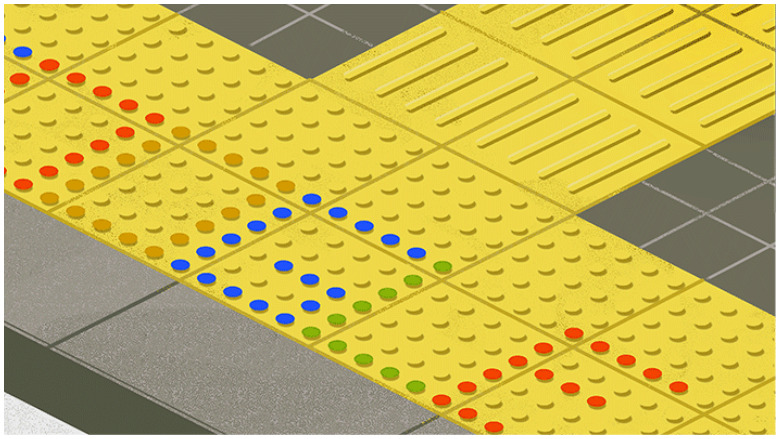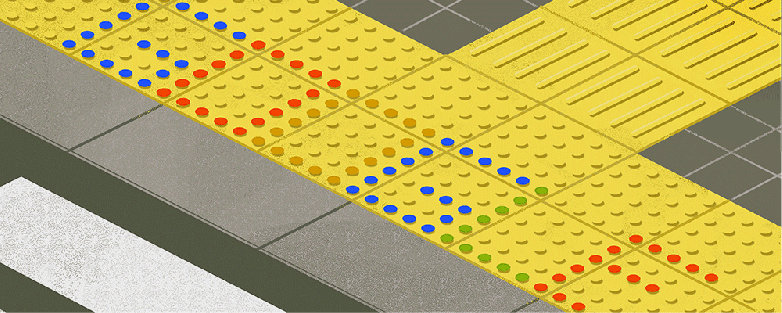
Google Seiichi Miyake
Seiichi Miyake, the Japanese inventor, is the subject of a March 18, 2019 Google Doodle that celebrates his tactile block innovation that helped visually impaired people find their way around public spaces. It was a simple idea but a very influential one that improved lives all over the world.
Miyake’s invention “drastically improved the way those who are visually impaired navigate public spaces around the globe,” Google noted with the Doodle. The next time you are at a corner, look down, and, if you see the tactile blocks, pause to remember Seiichi Miyake.
Here’s what you need to know:
1. Seiichi Miyake Invented What Were Originally Known as ‘Tenji’ Blocks

Seiichi Miyake Google Doodle.
You may have seen or felt the bumps on pavement – or just never really remarked on them before. They were the brainchild of a man – Seiichi Miyake – who wanted to help a friend who was losing sight. According to Google, in 1965, Miyake invented “tactile blocks (or Tenji blocks as they were originally known) to help a friend whose vision was becoming impaired.”
ADA Solutions Inc. notes that the invention eventually spread throughout the world. Called “truncated domes,” the “tactile warning surface” was built into “sidewalks and pedestrian thoroughfares…throughout his native Japan, as well as Australia, the United Kingdom, Canada, and the United States.”
According to Truncated Domes Depot, the bumps are alternatively known as “truncated domes, tactile warning systems, or detectable warning tiles, or tactile pavement.”
2. The Tactile Warning Systems Are Designed to Warn Visually Impaired People About Looming Dangers
Miyake was inspired to create the tactile warnings systems in part out of a worry that visually impaired people could be injured boarding trains.
The bumps functioned almost like a traffic light. They are basically a signal to stop or go. They aren’t for traction per se.
The first pattern “was a series of lines” that indicated to visually impaired people that it was safe to keep moving forward, according to Truncated Domes Depot. The second distinct pattern of lines contained what were called “truncated domes” and suggested to the visually impaired person that they should stop.
In the U.S., though, only the second type of pattern is used, the site reports. Mashable reports that the circles “mean an impending hazard,” and the lines are meant to be like “a compass.”
3. The invention of Miyake, an Engineer, Was First Unveiled in Japan Near a School for the Blind
Seiichi Miyake was a Japanese engineer by profession. According to Google, the invention was first put to use “on a street near the Okayama School for the Blind in Okayama City, Japan on this day in 1967.”
In a few years, the country mandated the blocks at all railway stations, greatly improving safety for the visually impaired as they navigated their communities.
In addition, 80 percent of the visually impaired have some sight – perhaps they can sense different shades – and the blocks also assist them because they stand out from the pavement, according to a study on Japanese use of the tactile blocks.
4. Seiichi Miyake Used His Own Money to Fund the Invention
Moved by his friend’s plight, Seiichi Miyake didn’t just invent the blocks, he used his own money to do so.
One blogger who writes about disabilities laments that Miyake hasn’t become better known, although the Google Doodle could change that. Full biographies of the inventor are hard to find.
“It disheartens me a little that the designer is not better known, or for that matter his friend who was becoming vision impaired in the 60’s, who helped him develop the tile,” the blogger wrote.
5. Google Praised Seiichi Miyake For Drastically Improving the Lives of Visually Impaired People
Now that you stop to think about it: Miyake’s invention is simple in nature. However, that’s true of many inventions that change lives, and change lives, his did.
Google praised Miyake’s “desire to help a close friend” that “turned into an innovation that drastically improved the way those who are visually impaired navigate public spaces around the globe.”
From friendship grew an idea that improved the lives of countless people. “In 1965, Seiichi Miyake has invented the Tactile Ground Surface Indicator as a tool of communication between visually impaired people and built environment.The device functions to help the elderly, children and tourist as well as those with visual impairment in their way-finding,” reads a journal article on the topic in Procedia.

